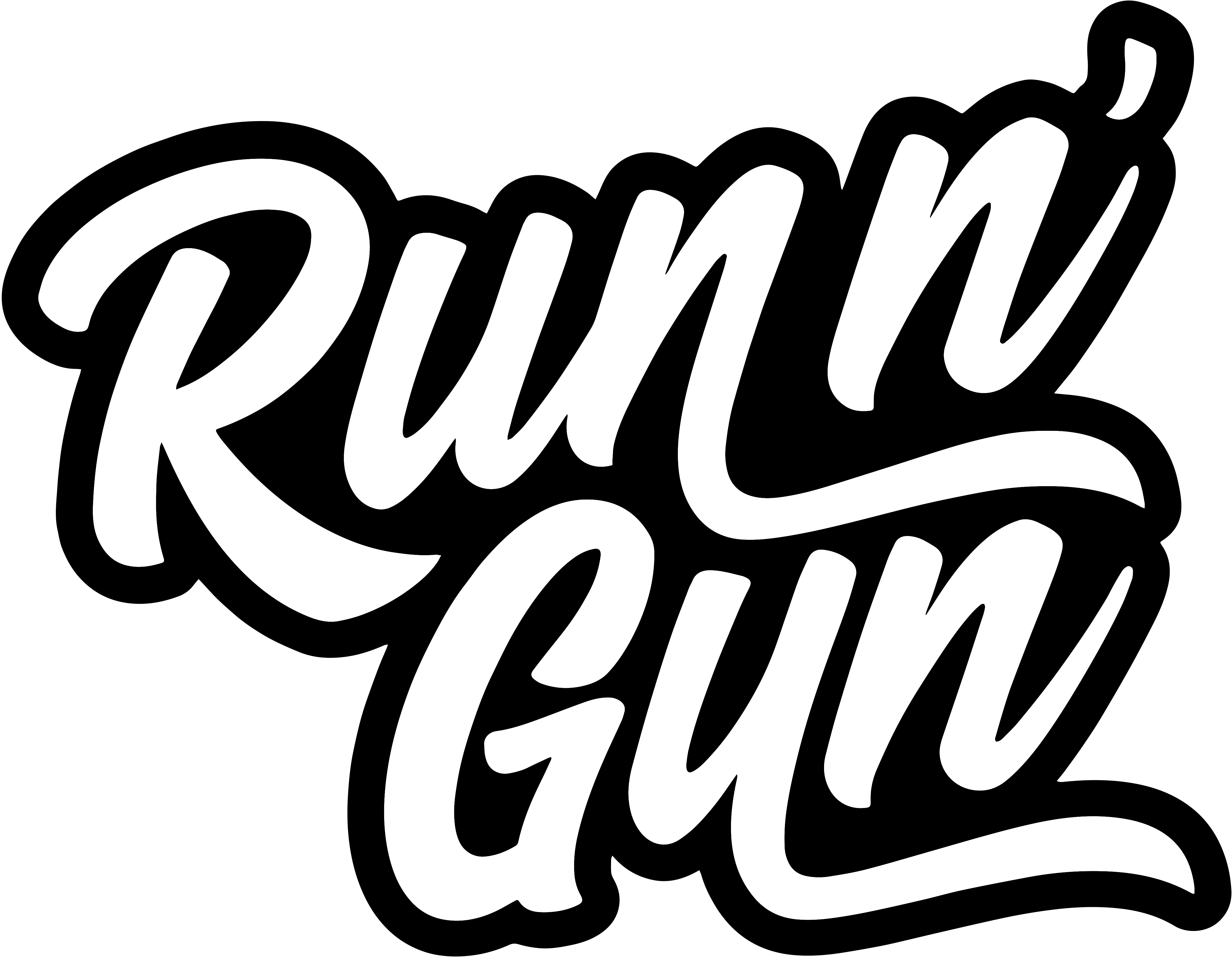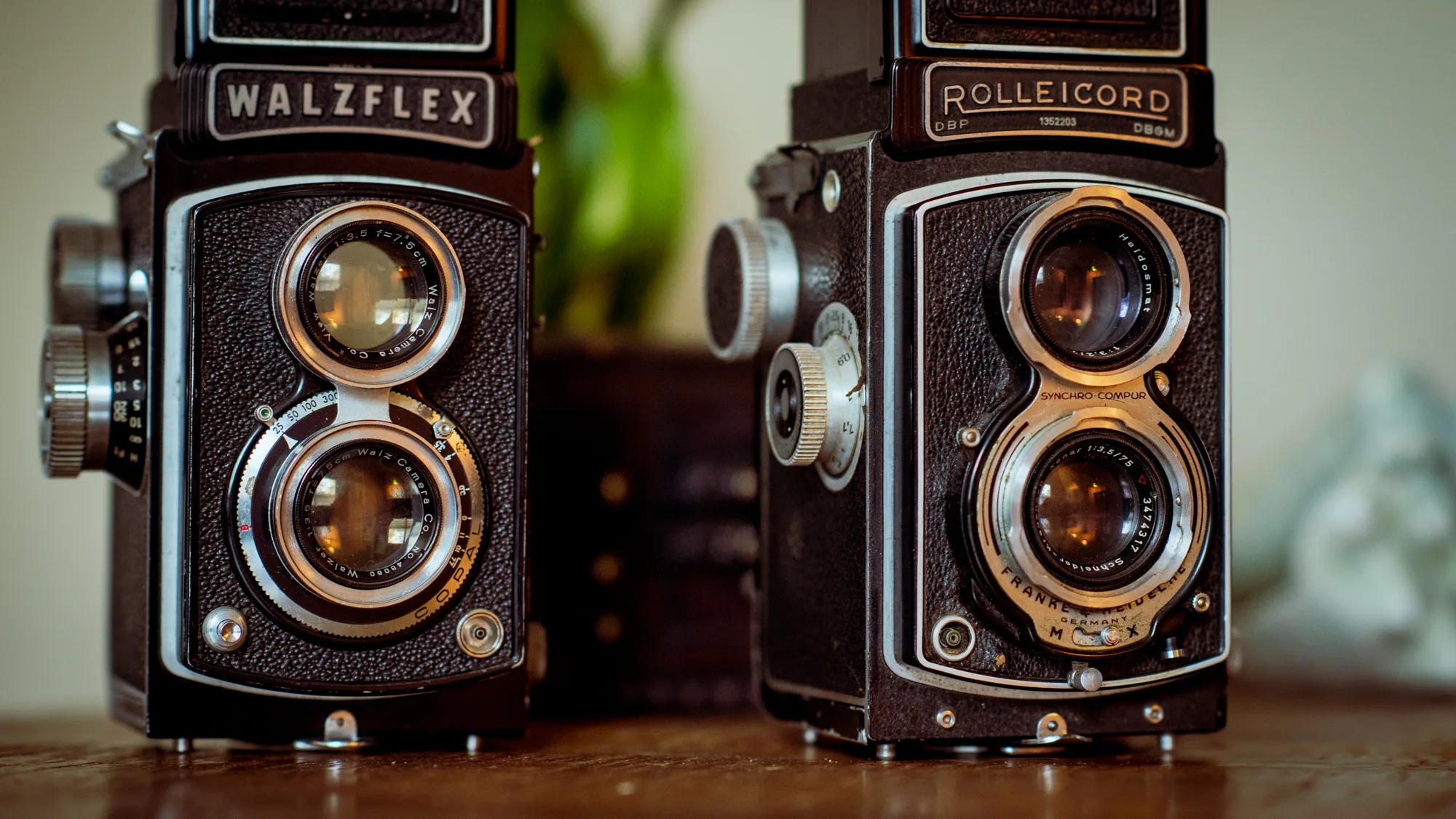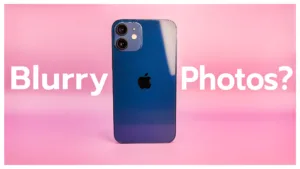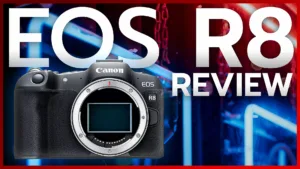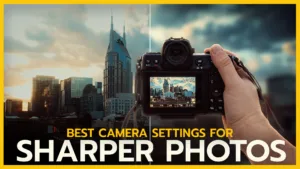Rare Marketplace Film Find
Every once in a while, I’ll be scrolling through Facebook Marketplace and find a good deal on a film camera, but never have I found two! Typically, I avoid Marketplace for cameras (especially medium format), because they’re quite overpriced. I’ll be sharing my first impressions on my new [to me] Rolleicord and Walzflex TLR cameras. In the near future, I’ll also write a follow-up article on each camera once I’ve shot and developed a couple rolls of film.
So now you’re likely asking: What’s a TLR? Why do they have two lenses? And why did I buy them? I’ll answer all of that in this article and quite a bit more.
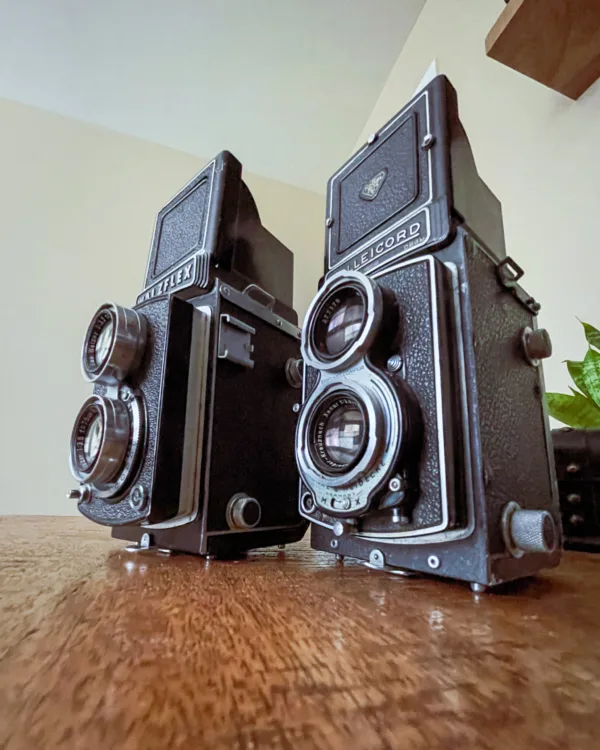
Twin-Lens Reflex (TLR) Film Cameras
Also commonly known as TLRs, Twin-Lens Reflex cameras, quite noticeably have two lenses. These lenses are identical focal lengths but serve two purposes. The top lens is used to frame the image through the viewfinder at the top of the camera. Light enters the lens, and is bounced off a mirror onto a piece of ground glass. On the ground glass, the photographer will see the image, much like a DSLR.
The bottom lens is what actually makes the image. Light enters straight through the lens, and exposes the film when the shutter is opened. Both lenses are attached on the same adjustable plane, allow them to move together for accurate focusing. A knob on the photographer’s right side moves the lenses closer or further from the film to focus the image. Pretty simple right?
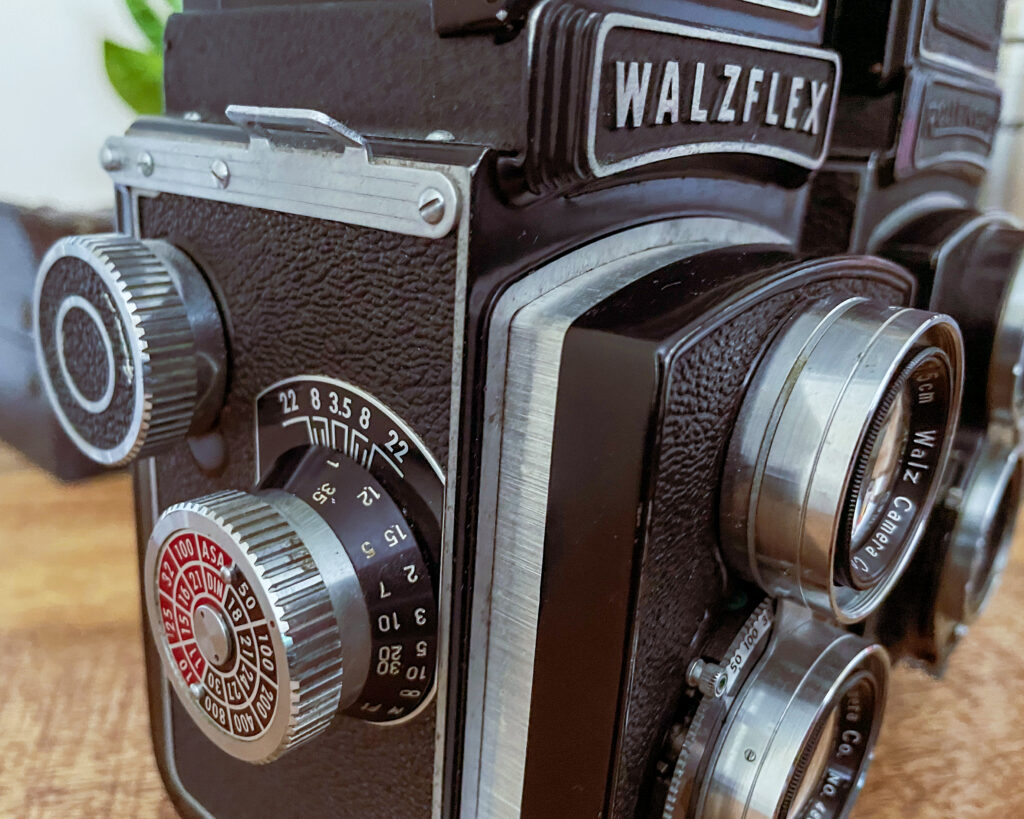
What is Medium Format?
The Rollei and Walz are not my first TLR or Medium Format film cameras. I also have a Kodak Duaflex III, a few Kodak Brownies and a No. 1 Kodak Autographic Pocket JR. These cameras are quite old and have light leaks, so they’re more for decoration in my studio, than practical day-to-day cameras. Also, as technology progressed, the quality of the camera and glass improved greatly, leading to sharper images.
So what is medium format? For digital shooters, this will take a little history to explain. The 35mm sensor inside of a full-frame digital camera is 36x24mm. That’s the same size as a single exposed frame on a roll of 35mm film. So a full-frame digital sensor is equivalent to a full exposed frame on 35mm film. If you’re with me so far, it doesn’t get too much more complicated.
Medium Format is really any exposure larger than 36x24mm. In the case of the Walzflex and Rolleicord, that 6x6cm (60x60mm). If you scan your film like I do, this gives you a much larger frames to scan, and much higher resolution photographs. If you’ve ever use a Polaroid camera, like the i-Type, you’ve shot medium format! There are also Large Format cameras. You’ve likely seen these in old movies: the big box on a tripod, and the photographer sticks his head under a blanket before firing off a huge fiery flash. Large format is a significantly larger piece of film, like 4×5 inches. or 8x10in, and are loaded one frame at a time. It’s a total pain in the ass.
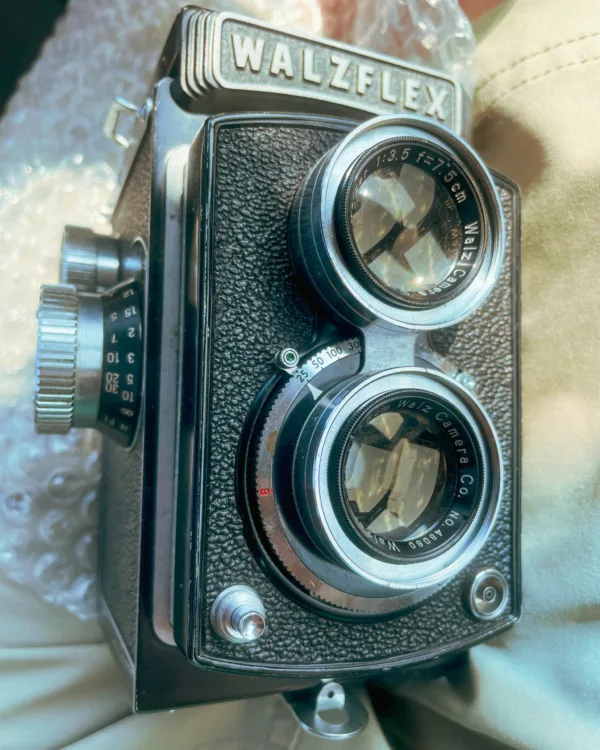
Why I like Medium Format Film
As you may know, my camera collection is more than just wall decor; I do actually shoot with them, like my 35mm Kodak Pony IV camera! I’ve found film helps me focus on the fundamentals of photography. It requires a lot of work to get to the final image: proper exposure, development, scanning, etc., so each shot is special. With that in mind, there are quite a few reasons I choose to shoot medium format film, or film in general.
1. Sharing my Photographs
As I mentioned above, I scan my film after I develop it, so that I can make prints or share my analog photography captures on my social media. Medium format is like having a higher megapixel camera, and I can get more detail out of each scan. Film grain is also less apparent, giving medium format a seemingly cleaner appearance.
2. Medium Format Optics
If you’re familiar with what a full-frame sensor is, you’ve likely heard of, or have used, an APS-C 23.6×15.7mm sensor or Micro Four-Thirds (MFT) sensor. And you’ll know that there is a crop factor formula when it comes to selecting lens focal lengths. For example, a 35mm lens on an APS-C sensor is roughly equivalent to a 50mm lens on a full-frame. Just multiply the 35mm focal length x 1.5 crop factor to get 50mm. Hence the term “crop sensor.”
Medium format is the exact opposite of this. On a 6×6 like the Rollei and Walz, the “crop factor” is 0.55. So a 50mm lens on a Rollei would be equivalent to a 26mm focal length. Both the Rolleicord and Walzflex have 75mm lenses, which equates to a 41mm focal length. Full disclosure: there are some different articles out there, with different math theories and more complicated formulas, some equating these 75mm lenses closer to 48mm (almost a nifty fifty). The important thing to remember is, your focal length equivalent will be much wider on a Medium Format vs. 35mm. Just to add to the confusion, 6×4.5cm, 6x6cm and 6x7cm will all have different crop factors.
Another thing you may not have thought of is, Medium formats will also give you a perceived shallower depth of field than 35mm. Just like when one goes from a crop sensor to a full-frame 35mm sensor, perceived DOF increases. I can’t wait to see what the bokeh looks like with some portraits! So with a resolution frame and shallow depth of field, what ‘s not to love about medium formats?
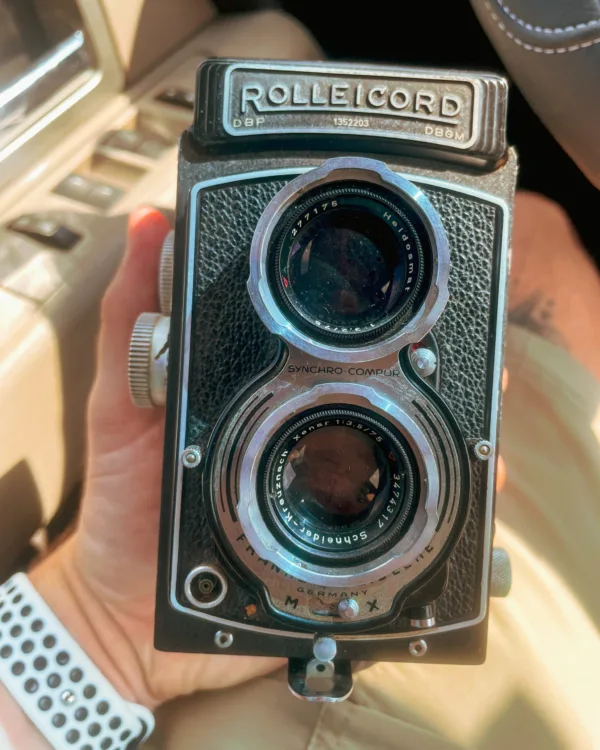
First Impressions of the Walzflex and Rolleiflex – Final Thoughts
One of the first things I noticed about these two cameras is the solid build quality. These cameras are roughly 70 years old and are in amazing shape. I’ll attribute that to the metal construction and a few people taking great care of them over the years. On top of the functional design, the aesthetics of polished metal on black leather is quite the attention grabber.
I’m quite excited to see what the Rolleicord’s Xenar 75mm f/3.5 and Walzflex’s Walzer 75mm f/3.2 are capable of taking. Either way, I’ll be sharing my film scans with you in the near future! Let me know in the comments what you think I should photograph with my new TLR cameras!
